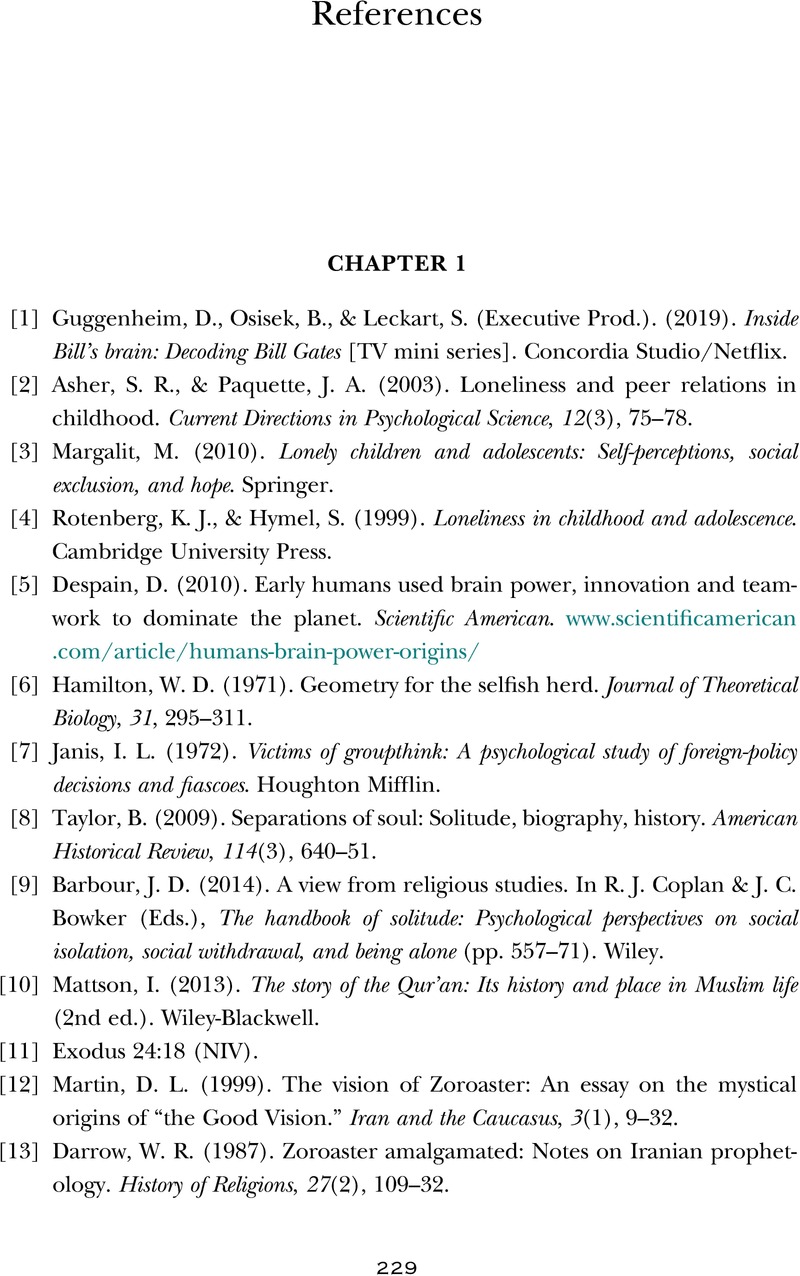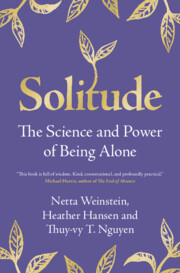Book contents
- Solitude
- Solitude
- Copyright page
- Contents
- Note to the Reader
- Introduction
- Chapter 1 Solitude Is Not Just for Hermits, Poets, and Billionaires
- Chapter 2 Everyday Solitude for Everyday People
- Chapter 3 What Makes Solitude Great?
- Chapter 4 Mapping the Benefits of Solitude
- Chapter 5 What’s Choice Got to Do with It?
- Chapter 6 Balancing Solitude with Social Time
- Chapter 7 Super/Natural Solitude
- Chapter 8 Finding Your Happy Place in Solitude
- Chapter 9 Can We Get Better at Being Alone?
- Chapter 10 Solitude across a Lifetime
- Acknowledgments
- References
- Index
- References
References
Published online by Cambridge University Press: 24 March 2024
- Solitude
- Solitude
- Copyright page
- Contents
- Note to the Reader
- Introduction
- Chapter 1 Solitude Is Not Just for Hermits, Poets, and Billionaires
- Chapter 2 Everyday Solitude for Everyday People
- Chapter 3 What Makes Solitude Great?
- Chapter 4 Mapping the Benefits of Solitude
- Chapter 5 What’s Choice Got to Do with It?
- Chapter 6 Balancing Solitude with Social Time
- Chapter 7 Super/Natural Solitude
- Chapter 8 Finding Your Happy Place in Solitude
- Chapter 9 Can We Get Better at Being Alone?
- Chapter 10 Solitude across a Lifetime
- Acknowledgments
- References
- Index
- References
Summary

- Type
- Chapter
- Information
- SolitudeThe Science and Power of Being Alone, pp. 229 - 278Publisher: Cambridge University PressPrint publication year: 2024



